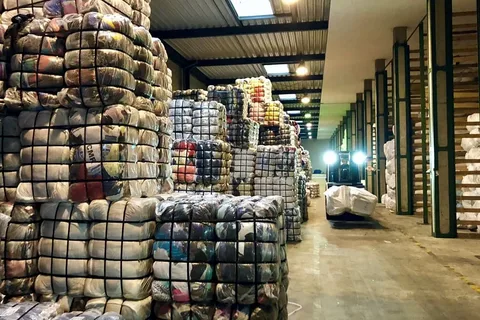In the age of fast fashion and disposable consumerism, textile recycling has emerged as a powerful solution to combat environmental degradation. Textile recycling involves the process of reusing and repurposing old clothes, fabrics, and other textile-based products to minimize waste and reduce the strain on our planet’s resources. Companies like Green City Recycler are leading the way, showcasing how sustainable practices can make a profound impact on the environment and local communities.
The Environmental Challenge of Textile Waste
The global fashion industry produces billions of garments annually, many of which end up in landfills or incinerators. Shockingly, the Environmental Protection Agency (EPA) reports that approximately 85% of all textiles are discarded rather than recycled, leading to environmental challenges such as:
- Excessive Landfill Use: Non-biodegradable textiles like polyester take decades to decompose, occupying valuable landfill space.
- Pollution: Textile dyes and synthetic fibers release harmful chemicals and microplastics into soil and water systems.
- Resource Depletion: The production of new textiles consumes vast amounts of water and energy, further straining natural resources.
By adopting textile recycling practices, these challenges can be significantly mitigated, contributing to a more sustainable and eco-friendly future.
How Textile Recycling Works
Textile recycling follows a systematic process designed to maximize the recovery of usable materials while minimizing waste. Here’s how it works:
- Collection: Old clothes, fabric scraps, and other textiles are gathered through donation bins, drop-off points, or specialized services like those provided by Green City Recycler.
- Sorting: Collected textiles are sorted based on their material type, quality, and usability. Items in good condition may be repurposed or donated, while damaged materials are earmarked for recycling.
- Processing: Textiles are broken down into fibers or shredded into raw materials, which can be used to create new products such as insulation, industrial rags, or recycled fabrics.
- Repurposing: Recycled materials are given a second life in innovative ways, supporting the circular economy.
The Benefits of Textile Recycling
The advantages of textile recycling go beyond waste reduction. Let’s explore its multifaceted benefits:
1. Environmental Preservation
Textile recycling reduces the volume of waste in landfills, conserves natural resources, and lowers greenhouse gas emissions associated with manufacturing new materials.
2. Economic Opportunities
The recycling industry generates employment in collection, sorting, processing, and manufacturing, fostering economic growth in local communities.
3. Support for Charitable Causes
Many textile recycling programs collaborate with nonprofits, donating wearable items to those in need or funding social initiatives through sales.
4. Consumer Awareness
Textile recycling initiatives encourage individuals to think critically about their consumption habits, paving the way for a more mindful society.
Green City Recycler: A Leader in Sustainable Solutions
Green City Recycler is at the forefront of promoting sustainable textile recycling practices. By providing accessible collection bins and collaborating with local organizations, Green City Recycler makes it easier for individuals and businesses to participate in eco-friendly waste management.
Their innovative approach focuses on:
- Convenience: With strategically placed collection bins, they make textile recycling a hassle-free process for communities.
- Education: Green City Recycler raises awareness about the importance of recycling textiles, inspiring individuals to take action.
- Sustainability: By diverting textiles from landfills, they contribute to a cleaner, greener environment.
How You Can Get Involved
Making a difference starts with small steps. Here are ways you can support textile recycling efforts:
- Donate Unwanted Clothes: Use Green City Recycler’s collection bins to donate clothes and textiles you no longer need.
- Choose Recycled Products: Opt for products made from recycled textiles to reduce demand for virgin materials.
- Spread Awareness: Educate friends and family about the environmental benefits of textile recycling.
- Support Recycling Initiatives: Partner with organizations like Green City Recycler to organize community collection drives.
Textile Recycling and the Future
The future of textile recycling holds exciting possibilities, including advanced technologies like chemical recycling, which can process mixed fabrics more efficiently, and innovations in sustainable fashion design. As awareness grows, the demand for eco-friendly solutions will continue to rise, fostering a more circular economy.
Organizations like Green City Recycler are paving the way, proving that sustainable change is not only possible but also essential. By embracing textile recycling, we can create a world where waste is minimized, resources are conserved, and communities thrive.
Conclusion
Textile recycling is more than just a trend; it’s a necessity in our fight against environmental challenges. By choosing to recycle textiles, individuals and businesses alike can contribute to a sustainable future. Green City Recycler offers a seamless way to take part in this eco-conscious movement. Together, we can transform waste into valuable resources, one fabric at a time.
For more information on how you can participate in textile recycling, visit Green City Recycler’s website today and be part of the change!









